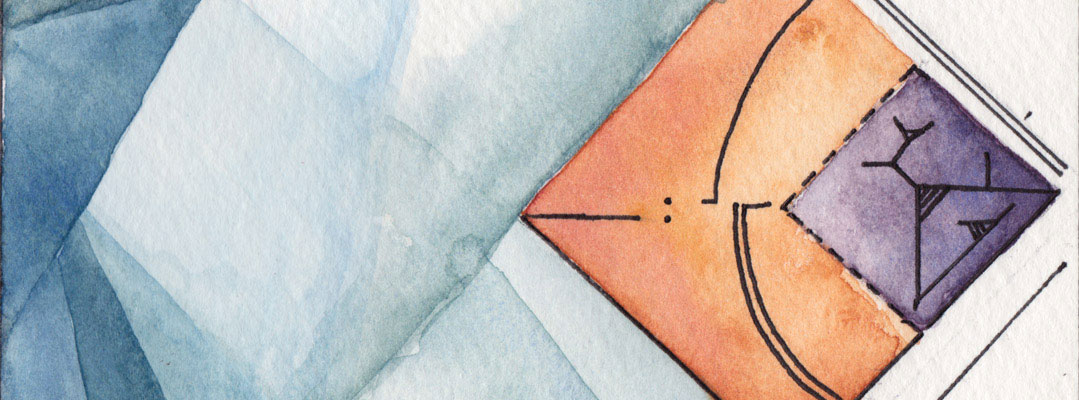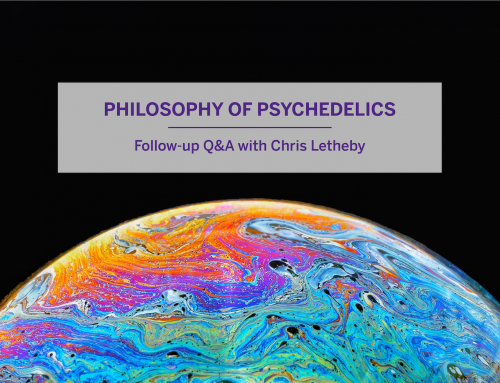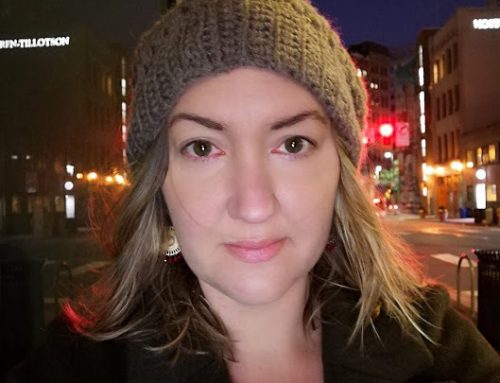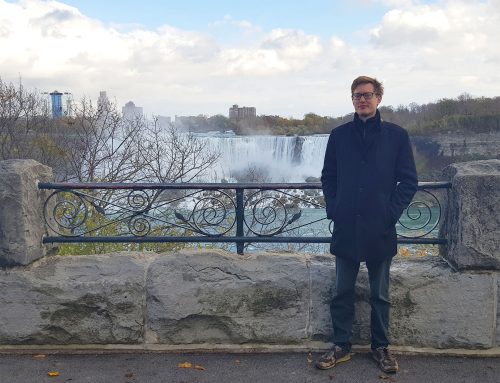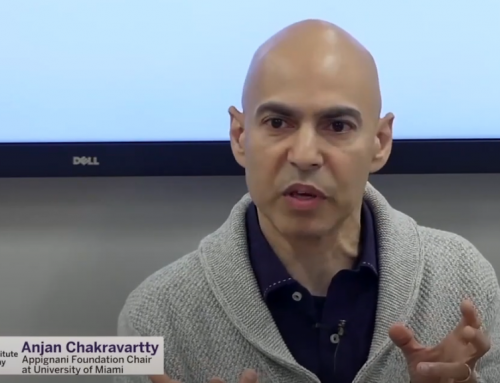The 2017 Annual Rotman Conference, Cosmology and the Future of Spacetime, was held here at Western from June 12-14. We are very pleased to shared videos from the first five talks–we’ll have more to share later this week. In addition to these videos, a photo album from the conference can be viewed on our Flickr account.
[embedyt] http://www.youtube.com/embed?layout=gallery&listType=playlist&list=PLkMaaEPd7InK_n87pvo5oVOJp7hN4QsMu[/embedyt]
Robert Brandenberger (McGill University), “Emergent space and its possible observational signatures”
The physical theories which are used in cosmology break down in the very early universe. I will discuss what conditions a theory of the very early universe has to obey in order to be able to explain current observations on the large-scale structure of the universe. One class of models which obey these conditions is “emergent cosmology”. I will explain how such a scenario could emerge from basic principles of superstring theory and how it can be tested with observations.
Daniele Oriti (Max Planck Institute for Gravitational Physics – Albert Einstein Institute), “Cosmology as quantum gravity hydrodynamics: emergent universe without fundamental space and time”
We discuss a new perspective on the nature of cosmology from the quantum gravity point of view, and more specifically in an emergent spacetime scenario. It is based on the interpretation of cosmological dynamics as the hydrodynamic description of the microscopic quantum dynamics of the building blocks of spacetime. In this picture, the universe can be seen as sort of (quantum) fluid, the result of their collective interaction, and its cosmological description as appropriate for its coarsest approximation, close to equilibrium. Beside outlining this picture and its general implications for quantum gravity and cosmology, we also offer some examples of its realisation taken from current research in group field theory, and related quantum gravity formalisms.
Francesca Vidotto (Institute for Mathematics, Astrophysics and Particle Physics, Radboud University), “Quanta of spacetime in a non-singular universe”
Loop Quantum Gravity describes the dynamics of quanta of spacetime. What is the relation between those quanta and the classical spacetime? Moving from this question, I will introduce the covariant dynamics of the theory and discuss how this does not allow curvature singularities to form.
Henrique Gomes (Perimeter Institute for Theoretical Physics), “Timeless cosmology with records”
On the path towards quantum gravity we find friction between temporal relations in quantum mechanics (QM) (where they are fixed and field-independent), and in general relativity (where they are field-dependent and dynamic). In this talk, I will erase that distinction. I encode gravity, along with other types of interactions, in the timeless configuration space of spatial fields, with dynamics obtained through a path integral formulation. The framework demands that boundary conditions for this path integral be uniquely given. Such uniqueness arises if a reduced configuration space can be defined and if it has a profoundly asymmetric fundamental structure. These requirements place strong restrictions on the field and symmetry content of theories encompassed here. When these constraints are met, the emerging theory has no non-unitary measurement process; the Born rule is given merely by a particular volume element built from the path integral in (reduced) configuration space. Time, including space-time, emerges as an effective concept; valid for certain curves in configuration space but not assumed from the start. When some notion of time becomes available, conservation of (positive) probability currents ensues. I will show that, in the appropriate limits, a Schroedinger equation dictates the evolution of weakly coupled source fields on a classical gravitational background. Due to the asymmetry of reduced configuration space, these probabilities and currents avoid a known difficulty of standard WKB approximations for Wheeler DeWitt in minisuperspace: the selection of a unique Hamilton-Jacobi solution to serve as background. I illustrate these constructions with a simple example of a quantum gravitational theory for which the formalism is applicable, and give a formula for calculating gravitational semi-classical relative probabilities in it. Although this simple model gives the same likelihood for the evolution of all TT gravitational modes, there is evidence that a slightly more complicated model would favor modes with the smallest eigenvalues of the Laplacian and thus drive towards homogeneity.
Simon Saunders (University of Oxford), “What is space-time geometry? — the non-relativistic case”
I consider recent work of Wallace (BJPS forthcoming) on the status of inertial structure in non-relativistic classical physics, and on the underlying vector-space relationalism introduced in my ‘Rethinking Newton’s Principia’ (PoS 2103), with particular attention to the sense or senses in which spacetime geometry is emergent or has otherwise only a functional significance, as argued by Knox in the non-relativistic case, and by Brown in special and general relativity.
Videos of all Rotman Institute of Philosophy events can be viewed on our YouTube channel. Subscribe to our channel to be notified whenever new videos are added.

